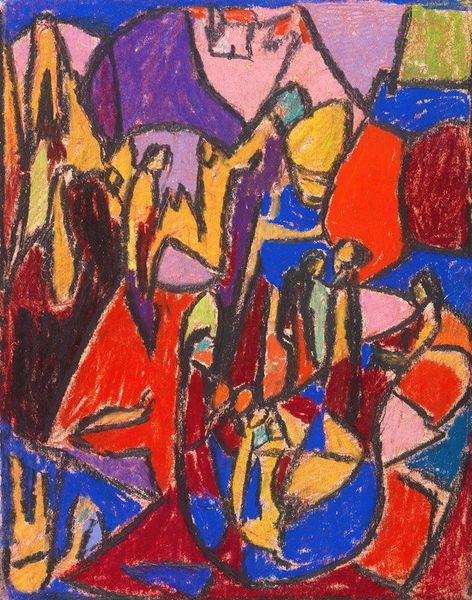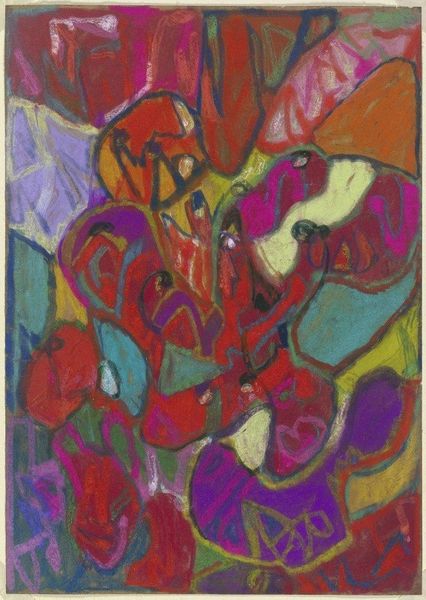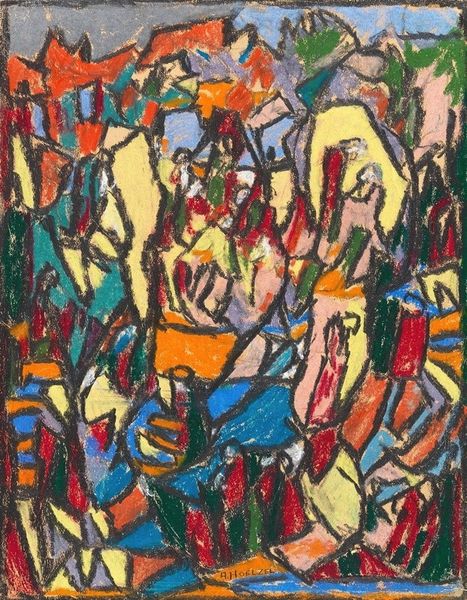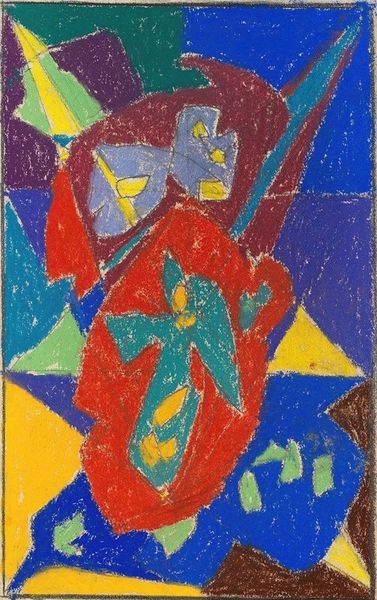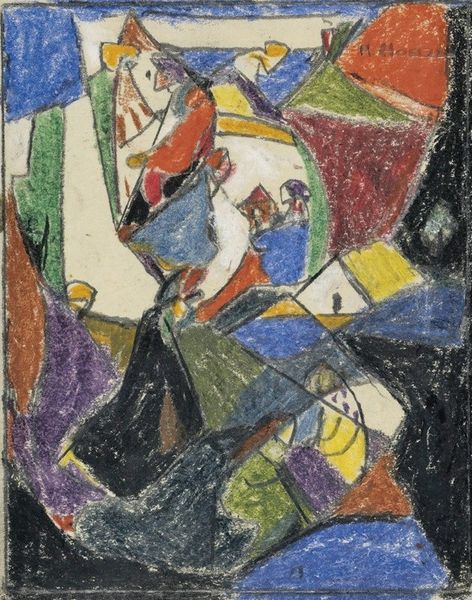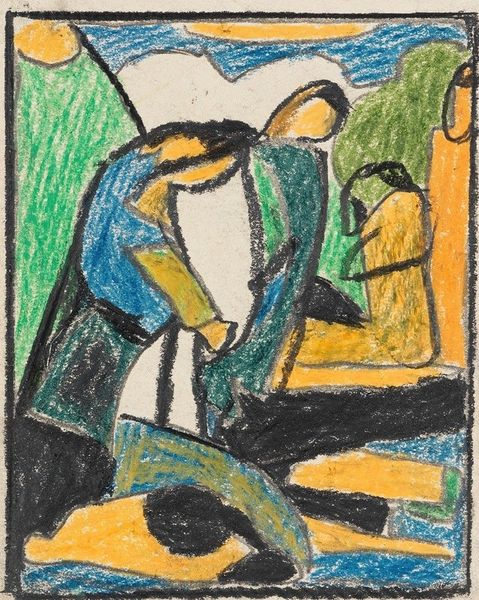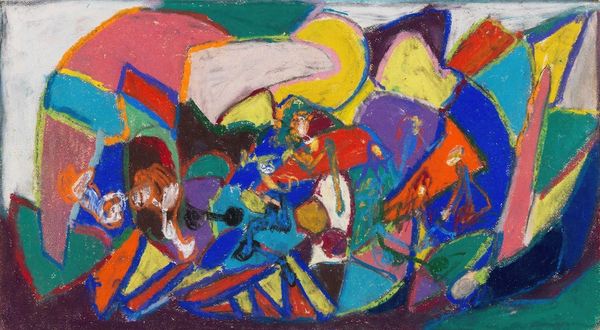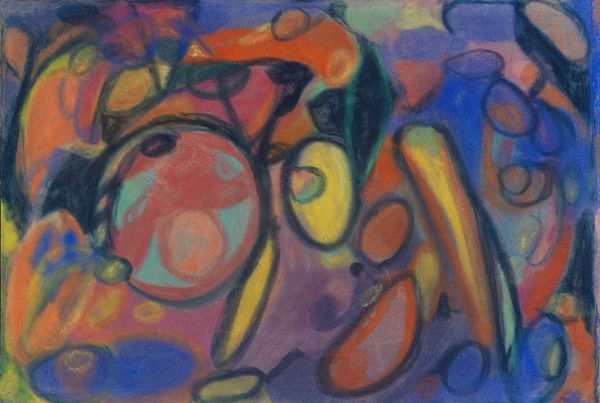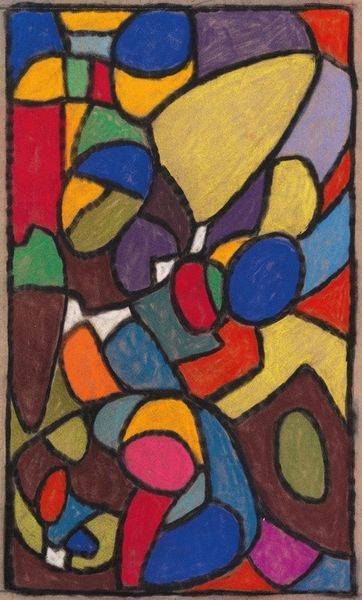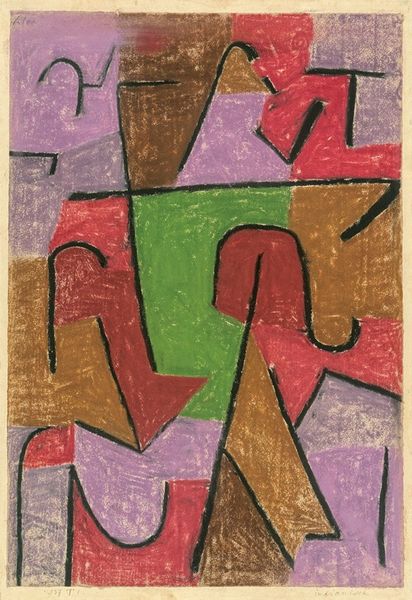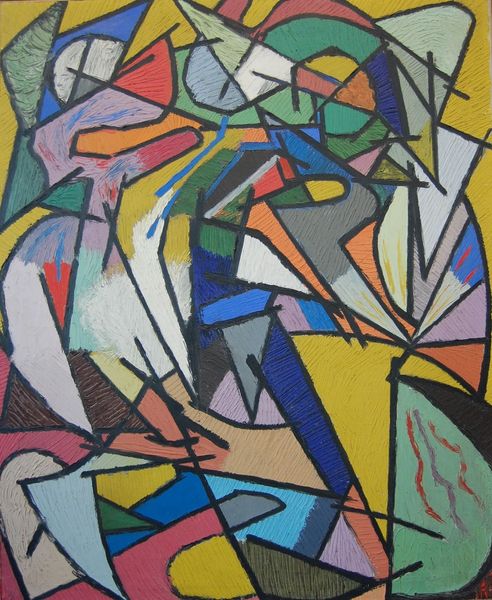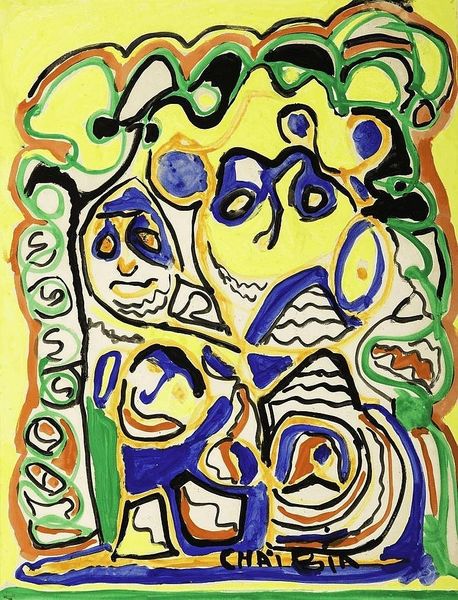
painting, pastel
#
painting
#
abstract
#
form
#
geometric
#
expressionism
#
pastel
Copyright: Public Domain: Artvee
Editor: Right now, we're looking at Adolf Hölzel's "Ohne Titel," made around 1920. It’s a pastel painting. What I notice right away is this jumble of forms—there's a dynamism but also a real struggle for space. What do you see in this piece? Curator: Intriguing. Formally, observe how Hölzel employs discrete blocks of color, bounded by dark outlines. Notice the interplay between these seemingly arbitrary forms: circles, trapezoids, biomorphic shapes. The composition appears, as you say, "jumbled," yet there is a discernible structure operating beneath the surface. It isn’t pure chaos. How would you describe the relationship between the colours he employs and the forms that they are bound by? Editor: I think there's a tension. The colors are bright, almost playful—yellow, purple, blue—but the heavy outlines and the way the shapes crowd each other create this claustrophobic effect. They don't quite harmonize. Curator: Precisely. Semiotically, one could argue these shapes are operating as signifiers, though pointedly without signifieds. They present *as* forms, and the viewer seeks to discern *what* they represent but there's no object other than shapes and their composition. Are you sensing any push-pull forces between these elements? Editor: I do. Now that I'm thinking about it more, the push-pull is present everywhere from its formal organization, use of outlines to color and forms. It is not quite harmonious but at the same time balanced! Curator: An astute observation. Hölzel’s strategy thwarts any easy symbolic reading, leading us instead to concentrate on the pure visuality. The piece foregrounds abstraction for its own sake, as it uses a complex relation between shapes to generate push-and-pulls. Editor: I appreciate how focusing on form helps unpack this. I was initially put off by what I thought was visual chaos, but I see now how purposefully constructed it all is. Curator: Yes. Ultimately, abstraction invites viewers into new ways of viewing!
Comments
No comments
Be the first to comment and join the conversation on the ultimate creative platform.
